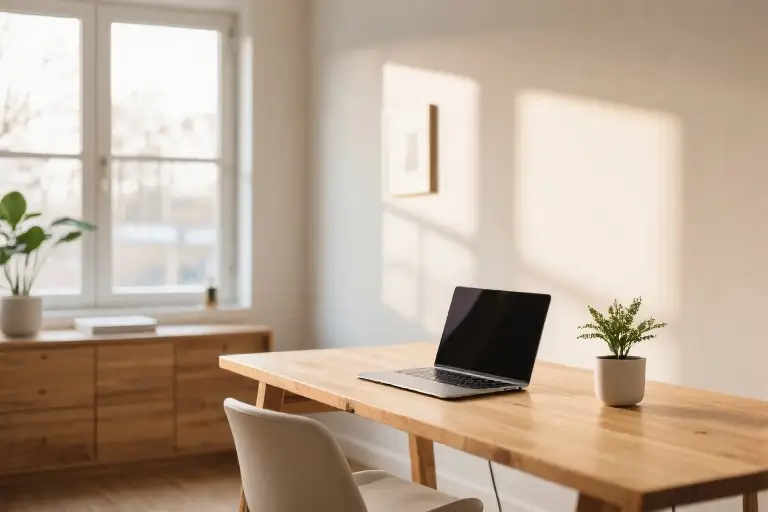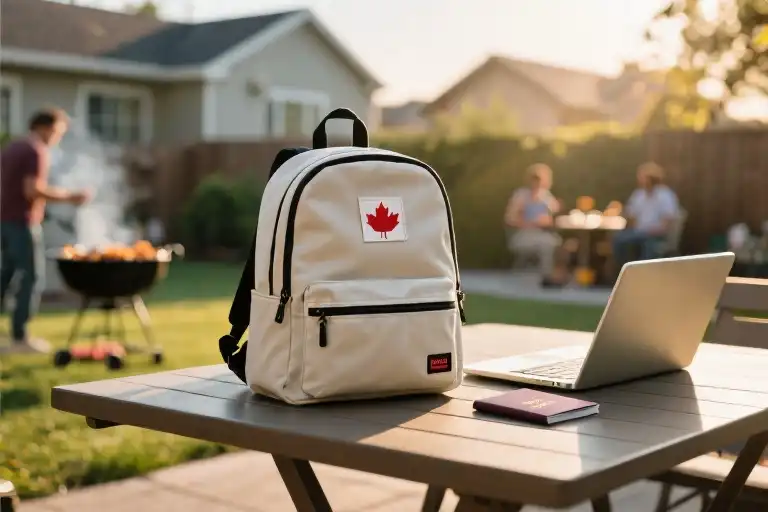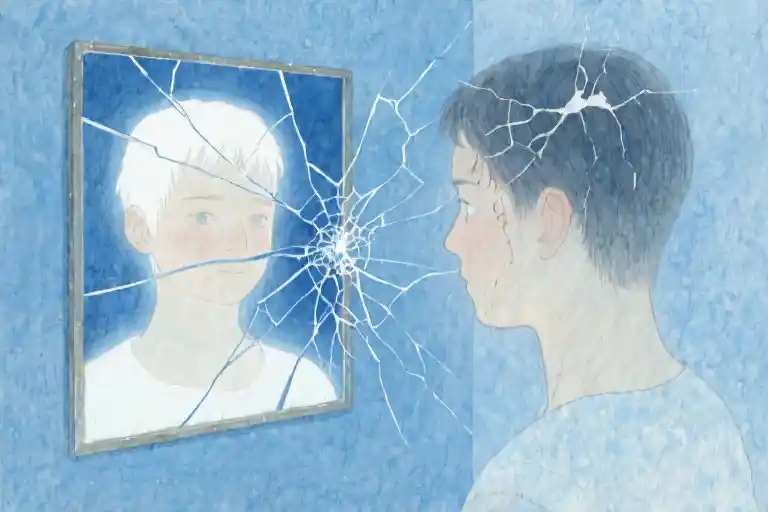The dining table hasn’t seen an actual dinner in weeks. It’s currently serving as an archaeological dig site – layers of unopened mail, half-empty water glasses, and that jacket I swore would come back in style (it’s been twenty years, but hope springs eternal). Around me, ceramics gather dust like tiny monuments to good intentions gone stale.
This isn’t how I want to live. The Instagram-perfect homes with their clear surfaces and artfully arranged storage baskets might as well be science fiction. I’ve tried those decluttering methods – the dramatic purges, the color-coded bins, the life-changing magic of tidying up. They work for about as long as a New Year’s resolution.
Here’s what nobody tells you about decluttering: it’s not really about the stuff. That pile of papers isn’t the problem – it’s the decision fatigue that turns simple sorting into mental quicksand. Those sentimental items aren’t just objects – they’re physical manifestations of ‘what if’ and ‘remember when.’ Traditional organizing advice fails because it treats clutter like a simple math equation when it’s actually advanced calculus with emotional variables.
Good organization sits at the intersection of psychology and design. The Chinese practice of feng shui understood this centuries ago – how space affects energy flow, how our environments shape our minds. Modern minimalism gets part of it right too, showing how less can actually feel like more. But for those of us who aren’t naturally tidy, who feel actual pain at the thought of parting with that concert tee from 2003, we need something different. We need to start by understanding why we cling before learning how to let go.
Clutter isn’t moral failure. It’s not some personal shortcoming. It’s what happens when practical space meets complicated human emotions. That jacket isn’t just fabric – it’s the version of me who wore it. The paperwork isn’t just forms – it’s the anxiety of missing something important. Until we address these underlying connections, no storage solution will stick.
The path to a calmer space begins with self-awareness, not self-flagellation. It requires acknowledging that some organizational systems will never work for your brain, and that’s okay. What if decluttering wasn’t about achieving perfection, but about creating room – both physically and mentally – for the life you actually want to live? That’s where real change begins.
Why You Keep Failing at Decluttering
The jacket from 2004 still hangs in my closet, its leather sleeves cracked with age but its sentimental value intact. Across the room, three half-empty water bottles form a modern art installation on my nightstand. I know clutter drains my energy—research from Princeton University’s Neuroscience Institute confirms physical clutter reduces focus—yet here we are.
The Psychology Behind Clutter Attachment
Our brains wire us to overvalue possessions through two sneaky mechanisms:
- Endowment Effect: A cognitive bias documented by behavioral economists where we ascribe more value to items simply because we own them. That chipped mug from your college days? Logically worthless. Emotionally priceless.
- Future-Self Fallacy: The “might need it someday” syndrome. UCLA’s Center on Everyday Lives of Families found the average American home contains 300,000 items—not because we use them, but because we imagine some hypothetical future where that broken fax machine becomes essential.
Decision Fatigue: The Silent Decluttering Killer
Every item demands mental bandwidth:
- Keep or toss?
- Where to store it?
- What if I regret this?
Stanford researchers found the average person makes 35,000 decisions daily. By the time we attempt to declutter, our prefrontal cortex—the brain’s CEO—is already exhausted from choosing lunch options and resisting social media. No wonder we default to “just leave it for now.”
Why Conventional Methods Backfire
Popular decluttering advice often fails because it ignores these psychological realities:
- The Marie Kondo Fallacy: While sparking joy works for some, many find the binary keep/toss choice paralyzing. A Journal of Environmental Psychology study revealed that forced rapid decluttering leads to 62% higher rebound clutter rates.
- One-Size-Fits-None Systems: Pinterest-perfect pantries assume everyone has identical spatial reasoning skills. In reality, Harvard’s Home Organization Aptitude Test shows organizational ability varies as widely as musical talent.
Here’s what actually helps: start by acknowledging your brain’s quirks rather than fighting them. That jacket isn’t just clothing—it’s a memory capsule. Those papers aren’t mess—they’re unmade decisions. Tomorrow we’ll explore gentler approaches that work with your psychology rather than against it.
Feng Shui and Minimalism: East Meets West in Organization Philosophy
The jacket from two decades ago still hangs in my closet, just in case retro fashion makes a comeback. My dining table serves as an impromptu filing cabinet more often than a place for meals. These aren’t just personal quirks – they’re manifestations of how our relationship with possessions gets tangled in emotions, habits, and sometimes, cultural blind spots.
Traditional Western organization advice often misses the mark because it focuses solely on physical solutions – more bins, better labels, stricter routines. Meanwhile, Eastern philosophies like feng shui have been addressing the energy of spaces for millennia, not just their functionality. The sweet spot for sustainable decluttering lies somewhere between these approaches.
The Modern Application of Ancient Principles
Feng shui at its core isn’t about bamboo fountains or red door frames – it’s about creating environments where energy (chi) flows smoothly. The principle of ‘clear entrance’ translates remarkably well to modern homes: when your doorway isn’t jammed with shoes, bags, and random clutter, you literally and metaphorically enter your space with less resistance. I tested this by clearing just the three feet around my front door, and the difference in how I felt coming home was noticeable immediately.
Five key feng shui concepts that work in any home:
- The command position (placing important furniture like beds and desks to face room entrances)
- The bagua map (dividing spaces into life areas like career, relationships, health)
- The five elements (balancing wood, fire, earth, metal, water through colors and materials)
- The importance of empty space (20-30% of surfaces should remain clear)
- The circulation path (maintaining clear walkways between furniture)
Minimalism’s Psychological Payoffs
Where feng shui addresses environmental energy, minimalism focuses on mental clarity. Researchers at Princeton University found physical clutter competes for your attention, reducing performance and increasing stress. My own ‘clutter threshold’ became apparent when I noticed anxiety spiking whenever more than five items accumulated on my nightstand.
Minimalism isn’t about deprivation – it’s about curation. When applied thoughtfully:
- Decision fatigue decreases (fewer choices about what to wear/use)
- Cleaning time reduces by up to 40%
- The items you truly value get proper attention
- Visual rest spaces lower cortisol levels
Cultural Wisdom in Daily Practice
The Japanese concept of ‘tokowaka’ (eternal youth) applies beautifully to possessions – surrounding yourself only with items that spark genuine joy or serve essential functions. Contrast this with the Western ‘just in case’ mentality that fills basements with unused items. Neither extreme works perfectly alone.
Practical fusion tips:
- Adopt the Scandinavian ‘one in, one out’ rule with feng shui placement
- Use the Japanese ’30-day trial’ for new purchases (store items for a month before deciding)
- Combine Western labeling systems with Eastern aesthetic concealment (pretty boxes with clear interior organization)
- Apply the Chinese ‘qi flow’ concept to digital spaces (unsubscribe from 10% of emails monthly)
What surprised me most was discovering these philosophies share a core principle: intentionality. Whether arranging furniture according to bagua zones or practicing the 90/90 rule (if you haven’t used something in 90 days and won’t in the next 90, let it go), the common thread is conscious choice over passive accumulation.
The cultural differences become complementary rather than contradictory when you realize:
- Feng shui provides the ‘why’ behind spatial arrangements
- Minimalism offers the ‘how much’ guidelines
- Western organization systems deliver the ‘where’ for remaining items
Next time you’re stuck between keeping and discarding, ask this fusion question: ‘Does this item contribute to good energy flow while serving a clear purpose or bringing authentic joy?’ If it fails either test, its place in your life deserves reconsideration.
The Three-Phase Decluttering Method: From Emergency to System
Most decluttering advice fails because it starts at the wrong end. Telling someone drowning in clutter to “just throw everything out” is like advising a novice swimmer to start with butterfly stroke. What we need are lifelines – practical steps that meet us where we are. This three-phase approach acknowledges that decluttering isn’t one grand gesture, but a series of manageable transitions.
Phase 1: The 5-Minute Rescue Mission
When every surface in your home has become a landing pad for random objects, the idea of decluttering can feel paralyzing. That’s where the 5-minute rescue comes in – not as a complete solution, but as proof that change is possible. Here’s how it works:
- Choose Your Battlefield: Pick one visible area (your coffee table, kitchen counter, or that notorious dining table). The psychological win of seeing immediate results matters more than the size of the space.
- The Trifecta Sort: Create three temporary zones:
- Keep (items that belong here and are used weekly)
- Relocate (items that have wandered from their real homes)
- Decide Later (everything else – we’ll tackle this in Phase 2)
- The Reset: Wipe the surface clean (literally – a damp cloth works wonders), then only return the Keep items. Notice how your shoulders drop when you see that clear space? That’s your brain responding to visual calm.
This isn’t about perfection – it’s about creating small oases of order that make the rest feel less overwhelming. Do one 5-minute rescue daily, and you’ll start noticing something curious: the cleared spaces become “contagious”, making you want to extend that feeling elsewhere.
Phase 2: The Emotional Sorting System
Now we address the elephant in the room: those items you can’t bear to part with, yet don’t actively use. Traditional decluttering methods treat these as moral failures, but they’re actually clues to what we value. The red/yellow/green system honors those emotions while creating boundaries:
- Red Box Items: The unquestionable keepsakes (grandma’s handwritten recipe, your child’s first drawing). These get preserved with intention – digitized, framed, or stored in a designated memory box (limit: one container per person).
- Yellow Box Items: The “maybe useful someday” category (that bread machine, extra throw pillows). Here’s the rule: if you haven’t used it in a year, it goes into a dated box. If you don’t open that box in six months, donate it unopened. This honors your practical side while testing real utility.
- Green Box Items: Things you’re ready to release. The trick? Schedule a “goodbye party” – take photos of sentimental items, then donate them on a specific date (pro tip: donating to a cause you care about eases the separation).
This phase works because it separates the decision-making from the action. You’re not throwing things away in the heat of emotion – you’re creating systems that allow for gradual release.
Phase 3: Small Space Alchemy
Now that you’ve cleared the clutter, we turn to the magic of making small spaces feel expansive. This isn’t about buying fancy organizers (though a few strategic tools help), but about rethinking spatial relationships:
- Vertical Frontiers: Walls are your untapped real estate. Install floating shelves above doorways for rarely-used items, use the back of closet doors for accessories, and think “up” rather than “out” when storing.
- The Double-Duty Doctrine: Every piece of furniture should earn its keep. Ottomans with storage, beds with drawers underneath, nesting tables that tuck away – these are the unsung heroes of small-space living.
- The Visibility Principle: We forget what we can’t see. Use clear bins for categories like craft supplies or spare parts, and arrange items like a boutique display – when things look appealing, you’re more likely to maintain order.
What makes this phase different is its focus on sustainability rather than just organization. By designing systems that align with how you actually live (not how you imagine you should live), the tidiness becomes self-reinforcing. That jacket from twenty years ago? If it doesn’t fit your space or life now, thank it for its service and let it go – there are new classics waiting to be discovered.
Making Tidy Stick
The real challenge of decluttering isn’t the initial purge—it’s preventing that creeping sense of chaos from returning. Like uninvited guests, stray coffee mugs and paper piles somehow always find their way back to cleared surfaces. This isn’t personal failure; it’s human nature resisting sudden change.
Start Smaller Than You Think
Forget marathon cleaning sessions. The secret lies in micro-habits—those barely noticeable actions that accumulate into transformation. Try the “5-Minute Rule”: when waiting for coffee to brew or between Zoom calls, address one visible area (that kitchen counter island, your nightstand). Set a timer if needed. These brief interventions prevent messes from becoming overwhelming, while training your brain to recognize disorder instinctively.
The Three-Question Filter
Every new item entering your space should pass this gauntlet:
- Does this serve an active purpose in my current life (not some hypothetical future version)?
- Do I have dedicated space for it without displacing essentials?
- Can something I already own perform this function?
Sarah, a graphic designer I coached, applied this to her stationery addiction. She realized 80% of her decorative tapes duplicated functions of the two she actually used. Now she photographs impulse buys and waits 48 hours—most never make it to checkout.
Create Maintenance Rhythms
Develop weekly “touchpoints”:
- Sunday evenings: Quick scan of high-traffic zones (entryway, work desk)
- Monthly “reset”: Re-evaluate one storage area (that junk drawer needs attention)
- Seasonal reviews: Before holiday decorations emerge, assess last year’s unused items
These aren’t deep cleans—just course corrections preventing accumulation. Think of it like dental hygiene: daily brushing avoids root canals.
Celebrate the Backslides
When you inevitably miss a week or relapse into old habits, note what triggered it (work crisis? houseguests?). Instead of self-scolding, analyze patterns. Maybe your “organized” system was too complex, or emotional exhaustion lowered resistance. Adjust accordingly. Progress isn’t linear—each restart strengthens your decluttering muscles.
Remember: you’re not failing at staying tidy; you’re learning what sustainable organization looks like for your unique brain and lifestyle. That jacket from 2003? Maybe it’s time to photograph it for nostalgia’s sake, then let it bless someone else’s closet. The space you’ll gain—both physically and mentally—is worth the temporary discomfort.
The Journey From Clutter to Clarity
We’ve walked through the psychology behind our accumulation habits, explored how Eastern and Western philosophies approach organization, and armed ourselves with practical, phased strategies to reclaim our spaces. But here’s the truth no decluttering guide usually admits: the laundry pile will reappear, that kitchen counter will collect mail again, and yes, you’ll probably buy another questionable jacket. That’s not failure – that’s life.
What changes after understanding the “why” behind clutter is your relationship with it. When papers pile up on your dining table, you’ll recognize it as temporary decision fatigue rather than personal inadequacy. When struggling to part with sentimental items, you’ll approach them with the Feng Shui concept of “flow” rather than guilt. The real victory isn’t spotlessness; it’s developing what I call “organized resilience” – the ability to course-correct without self-flagellation.
Start small tonight: open one drawer. Not to overhaul it, but to simply observe. Which items spark genuine warmth? Which ones whisper outdated obligations? That yellowing receipt from 2017 – does its presence serve your current life? These micro-moments of awareness compound into lasting change far more effectively than any marathon cleaning spree.
For those who want to continue this conversation, I’ve created a downloadable “Clutter Compassion Journal” that combines:
- Feng Shui zone mapping for your specific home layout
- Cognitive behavioral prompts to reframe sentimental attachments
- A progressive 21-day challenge (5-minute daily missions)
Remember what the ancient organizers knew: our spaces breathe with us. Some seasons will be neater than others, and that’s perfectly human. The goal isn’t perfection, but creating rooms that welcome you home – jacket collections and all.





